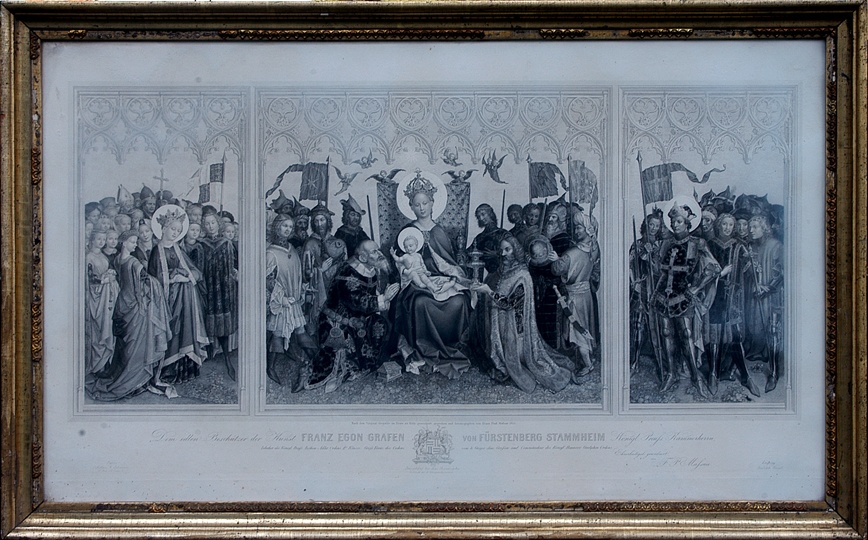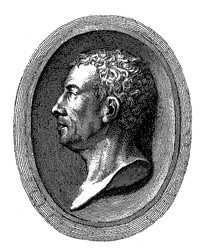Text unten: umfangreiche Widmung v. F. P. Massan an Graf v. Fürstenberg Stammheim
Franz Paul Massau hat den Stich 1855 nach dem Dreikönigsaltar im Kölner Dom von Stephan Lochner entworfen.
Auf dem Mittelbild des Triptychons ist in der Mitte Maria mit Kind auf einem Thron dargestellt. Sowohl sie als auch das Jesuskind tragen einen Heiligenschein. Über ihnen fliegen kleine Engel. Maria und das Kind sind umgeben von den drei Königen und ihrem Gefolge.
Im linken Bild des Triptychons ist die heilige Ursula inmitten ihres Gefolges von (insgesamt) 11.000 Jungfrauen dargestellt. Auch über ihrem Kopf befindet sich ein Heiligenschein, ihre Hände hat sie auf ihren Bauch gelegt.
Im rechten Bild des Triptychons steht im Vordergrund der Heilige Gereon im Ritterkleid. Hinter ihm steht ebenfalls eine Menschenmenge.
Die Bilder werden im oberen Teil durch gotische Verzierungen begrenzt.
en

